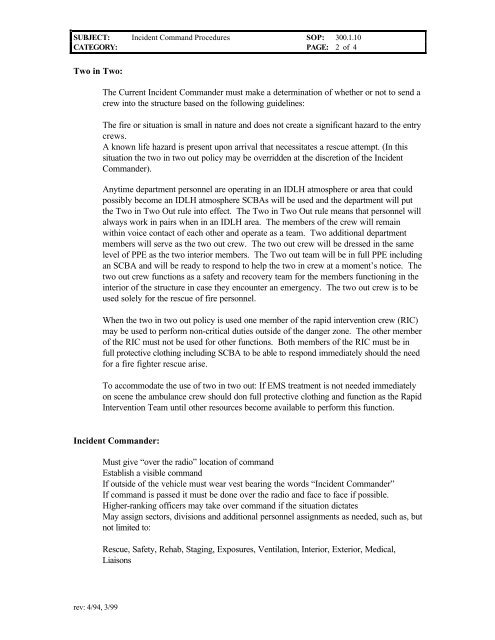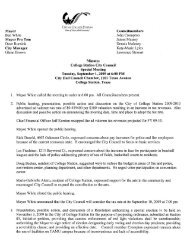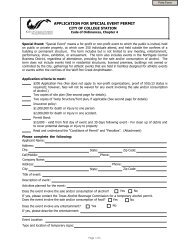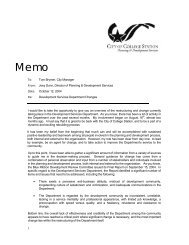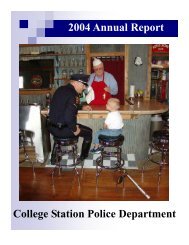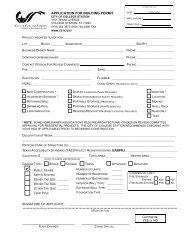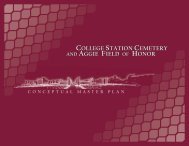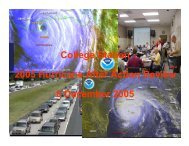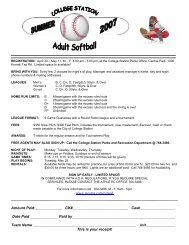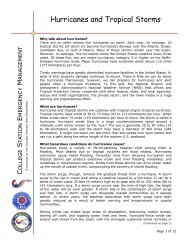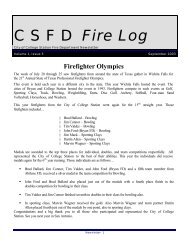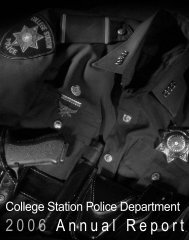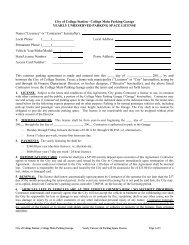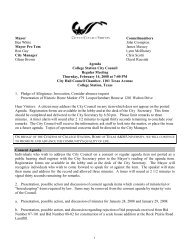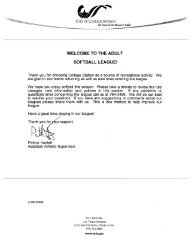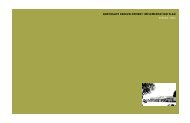standard operating procedure college station fire department
standard operating procedure college station fire department
standard operating procedure college station fire department
Create successful ePaper yourself
Turn your PDF publications into a flip-book with our unique Google optimized e-Paper software.
SUBJECT: Incident Command Procedures SOP: 300.1.10<br />
CATEGORY: PAGE: 2 of 4<br />
Two in Two:<br />
The Current Incident Commander must make a determination of whether or not to send a<br />
crew into the structure based on the following guidelines:<br />
The <strong>fire</strong> or situation is small in nature and does not create a significant hazard to the entry<br />
crews.<br />
A known life hazard is present upon arrival that necessitates a rescue attempt. (In this<br />
situation the two in two out policy may be overridden at the discretion of the Incident<br />
Commander).<br />
Anytime <strong>department</strong> personnel are <strong>operating</strong> in an IDLH atmosphere or area that could<br />
possibly become an IDLH atmosphere SCBAs will be used and the <strong>department</strong> will put<br />
the Two in Two Out rule into effect. The Two in Two Out rule means that personnel will<br />
always work in pairs when in an IDLH area. The members of the crew will remain<br />
within voice contact of each other and operate as a team. Two additional <strong>department</strong><br />
members will serve as the two out crew. The two out crew will be dressed in the same<br />
level of PPE as the two interior members. The Two out team will be in full PPE including<br />
an SCBA and will be ready to respond to help the two in crew at a moment’s notice. The<br />
two out crew functions as a safety and recovery team for the members functioning in the<br />
interior of the structure in case they encounter an emergency. The two out crew is to be<br />
used solely for the rescue of <strong>fire</strong> personnel.<br />
When the two in two out policy is used one member of the rapid intervention crew (RIC)<br />
may be used to perform non-critical duties outside of the danger zone. The other member<br />
of the RIC must not be used for other functions. Both members of the RIC must be in<br />
full protective clothing including SCBA to be able to respond immediately should the need<br />
for a <strong>fire</strong> fighter rescue arise.<br />
To accommodate the use of two in two out: If EMS treatment is not needed immediately<br />
on scene the ambulance crew should don full protective clothing and function as the Rapid<br />
Intervention Team until other resources become available to perform this function.<br />
Incident Commander:<br />
Must give “over the radio” location of command<br />
Establish a visible command<br />
If outside of the vehicle must wear vest bearing the words “Incident Commander”<br />
If command is passed it must be done over the radio and face to face if possible.<br />
Higher-ranking officers may take over command if the situation dictates<br />
May assign sectors, divisions and additional personnel assignments as needed, such as, but<br />
not limited to:<br />
Rescue, Safety, Rehab, Staging, Exposures, Ventilation, Interior, Exterior, Medical,<br />
Liaisons<br />
rev: 4/94, 3/99


